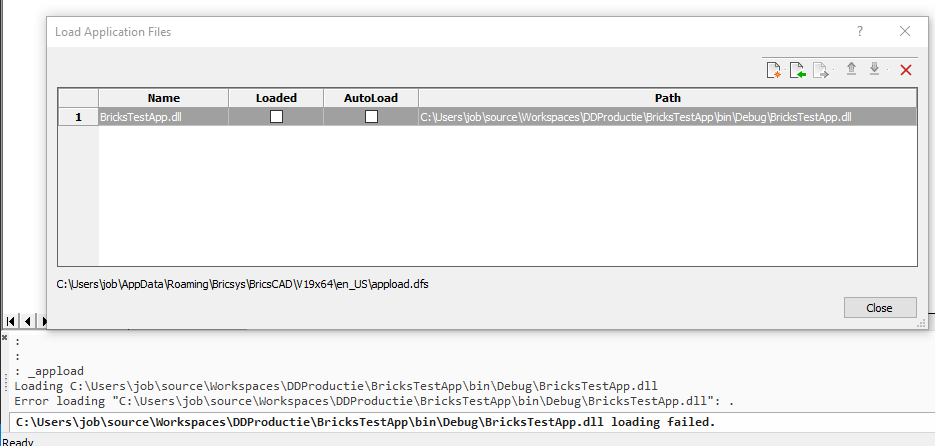

- #Wxgui.dll bricscad how to
- #Wxgui.dll bricscad install
- #Wxgui.dll bricscad full
- #Wxgui.dll bricscad software
- #Wxgui.dll bricscad code
How to solve “ptrace operation not permitted” when trying to attach GDB to a process? Run the following ( source)Įcho 0 | sudo tee /proc/sys/kernel/yama/ptrace_scope Gdb -ex run -args v.in.ogr out=bla dsn="PG:dbname=postgis user=me" olayer=postgislayerĪttaching to child process in gdb, use " attach " to attach to an existing process (needed for DBMI or d.mon debugging, etc). Gdb -args v.in.ogr out=bla dsn="PG:dbname=postgis user=me" olayer=postgislayerĪdditionally, you can tell it to run the process right away: type " frame 2" to switch to the second level function (see the backtrace), there you can again type " l" to see where it got up to.Īlternatively, you can add arguments to gdb directly on the command line:.
#Wxgui.dll bricscad code
#Wxgui.dll bricscad full

#Wxgui.dll bricscad install
on Debian GNU/Linux: apt-get install gdb)
#Wxgui.dll bricscad software
A reasonable tool is "Dependency Walker" (free as in free lunch, not software libero): Using GDB Sometimes it is needed to disentangle DLL dependencies. Some hints for how this could work can be found here. You'll need binaries built with debugging symbols, then you can use tools like Dr.

Thus the exit code only reports EXIT_SUCCESS or EXIT_FAILURE, but a failure can happen for any number of reasons, expected or unexpected, and is not a reason to panic in and of itself. In that way the return code can be used in script logic. Note that some modules (like g.findfile) exit with a status of 1 if it (for example) could not find a file, which may be exactly the test the module was run to perform. In a MS-Windows DOS box the equivalent command is " echo %errorlevel%". On UNIX (Linux, Mac OS, and Cygwin) directly after a command line module ends you can type " echo $?" and it will tell you the exit code. This is typically accompanied by an "ERROR: " message. To make the view a little more stable, with top running from the command line press "M" to sort by memory usage.Īll GRASS modules send out a return code of "0" if they exit successfully and "1" if they have exited with an error. While it won't give you many hard metrics it will give you an idea of what is happening. Top is a nice command line utility for watching a process's progression. Many modules will continue to work on these huge datasets, but processing time may make it not worth the while. While there is no set upper limit, anything bigger than 20000x20000 is considered large, and anything an order of mangnitude bigger than that will most likely end with out of memory or large file problems, especially on 32-bit platforms built without LFS support.

These messages are always present regardless of compiler settings.A higher debug level means you see more messages.Setting GRASS-environment variables (numbers: 1-5) g.gisenv set="DEBUG=1" For instructions on creating and applying patches the see Patches wiki page.Users should read the Mailing list etiquette page before posting questions to the grass-dev mailing list.The following command will disable the use of translated messages: Please use untranslated messages in your bug reports.Bugs should be reported in the GRASS GIS bug and wish tracker.9.7 Using kdbg (gdb graphical frontend).9.4 Saving a core dump for later analysis.3 Setting GRASS-environment variables (numbers: 1-5).


 0 kommentar(er)
0 kommentar(er)
